|
|
|
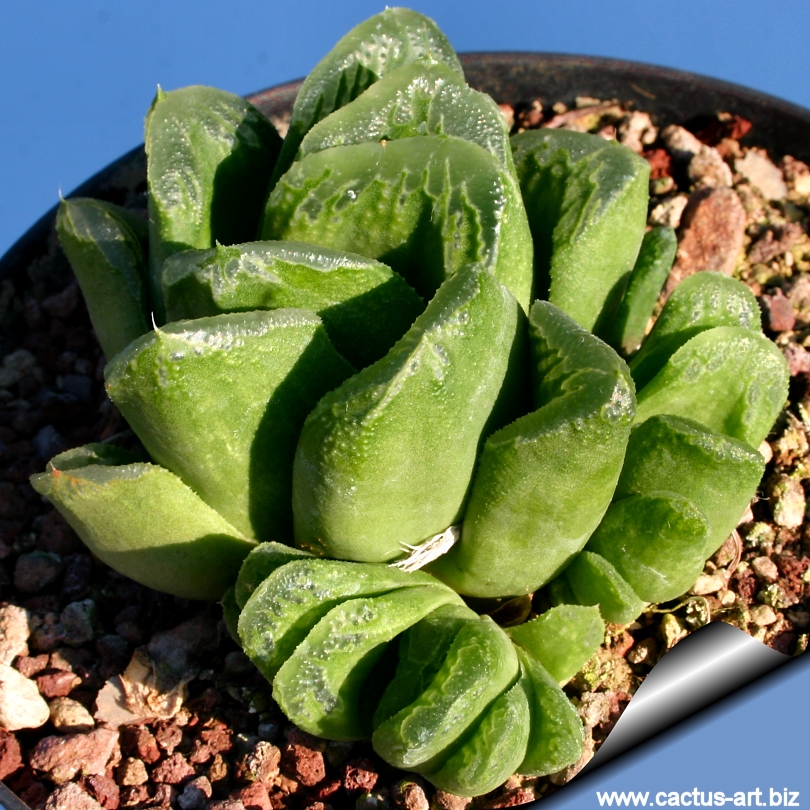
Hawortia "GREEN ROSE"
Haworthia “GREEN ROSE” is a beautiful hybrid
with squat lime and marbled chartreuse leaves that look like a green
rose flower with succulent petals,
making the plant a major conversation piece.
|
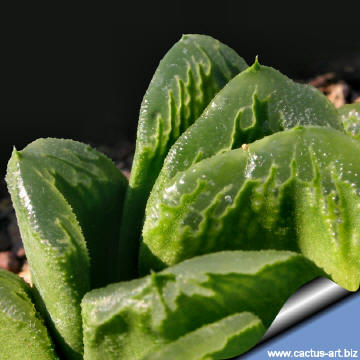 |
 |
|
. |
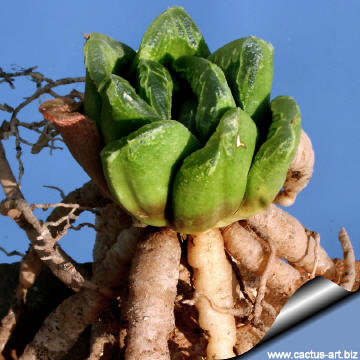 |
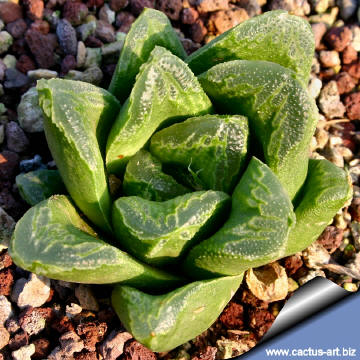 |
|
Advertising
|
|
|
|
|
Family:
Asphodelaceae (Aloacee -
Liliaceae)
Scientific name:
Haworthia
cv. GREEN ROSE H.C.K. Mak
Description:
Alsterworthia International 3(2)7.
Origin:
Garden origin (Nursery
produced cultivar)
|
|
Description:
Haworthia “Green Rose”
is a very nice
hybrid,
characterized by broad
squared-off
leaves
which are incurved like a rose bud
and ability to
form nice clumps. It seems to be
an
hybrid
between
H. truncata
and H.magifica
Rosettes:
Bright green that
have a nice rose shape.
Leaves: Squat
lime and marbled chartreuse
with "semi"-transparent
windows,
lovely
frosted
with shades of lime green.
The
tips of the leaves are like windows looking into the green jelly inside
and seem to glisten.
Flower:
The flower stalks reaches over a 30 cm in height, and feature small
white blossoms and cream/tan hanging,
inconspicuous flowers.
Phenology:
Blooms repeatedly, mainly in late
Spring/Early
Summer.
Roots: It has a huge fat, succulent root system, the roots are
contractile.
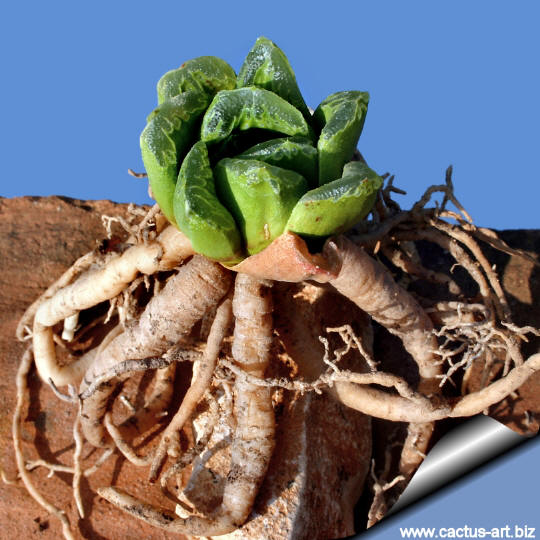
|
|
|
|
Cultivation:
Easy to grow it need regular water but do not water again until dry.
Also, it is a species that is dormant in the winter and require very
little water (maybe even none) during the cold months.
Frost Tolerance: Light frost protection
required. Minimum of 5ºC for safe growing (but hardy up to -5°C or
less.)
Sun Exposure: Requires light shade to bright light (protect
from strong
midday sun).
In shade the body colour will remain mostly green, while full sun will
darkena bit. Can be sunburned if moved from shade/greenhouse into full
sun too quickly. The amount of sunlight it can withstand without
scorching depends upon the how hot it becomes in the summer in the
locale in which it is planted. During the spring it may be able to
take full sun until the heat arrives at the end of spring. In an area
that has hot afternoon sun, it may be able to take full morning sun, but
requires afternoon shade or afternoon light shade.
Offsets readily. Needs a deep pot to
accommodate the long, thick, contractile roots.
Propagation:
Offsets that appear at the base
between the leaves;
leave them attached to form a cluster, or wait until they are 1/3 the
size of the parent and then detach and plant.


|
|